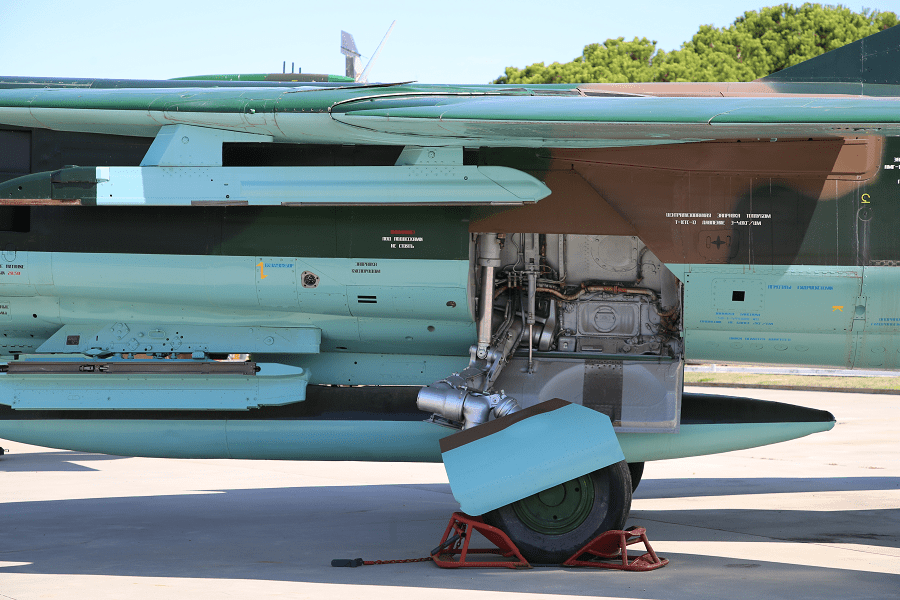The Mikoyan-Gurevich MiG-23 (Russian: Микоян и Гуревич МиГ-23; NATO reporting name: Flogger) is a variable-geometry fighter aircraft, designed by the Mikoyan-Gurevich design bureau in the Soviet Union. It is a third-generation jet fighter, the world’s most-produced variable-geometry aircraft, along with similar Soviet aircraft such as the Su-17 “Fitter”. It was the first Soviet fighter to field a look-down/shoot-down radar, the RP-23 Sapfir, and one of the first to be armed with beyond-visual-range missiles. Production started in 1969 and reached large numbers with over 5,000 aircraft built, making it the most produced variable-sweep wing aircraft in history. Today the MiG-23 remains in limited service with some export customers.
MiG-23MF. This was an export derivative of the MiG-23M produced from 1978 to 1983 at Znamya Truda. One version (izdeliye 2A or 23-11A), intended for sale to the Warsaw Pact, was practically the same as the MiG-23M with small differences in communication and IFF equipment. The other (izdeliya 2B or 23-11B) was designed for sale for certain Third World client states. Like the 23-11A it featured the Sapfir-23D-III radar (redesignated Sapfir-23E), but lacked electronic counter-countermeasure (ECCM) features and had lower overall performance. Their communication equipment was also less powerful, with the Lasour-SMA datalink removed from some aircraft. Until 1981, these were delivered to customers with the R-13M missile instead of the R-60.













